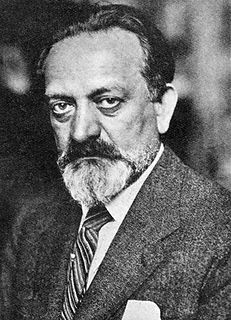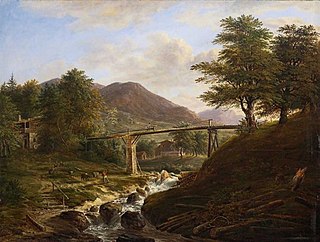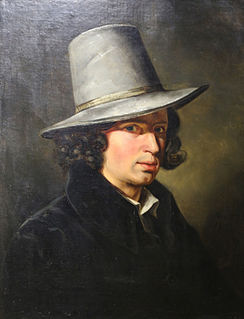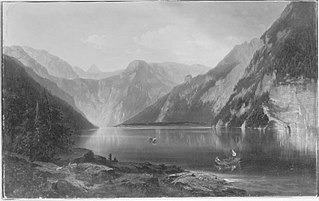This article needs additional citations for verification .(June 2019) |



Jakob Schlesinger, also Johann Jakob Schlesinger (born 13 January 1792 in Worms; died 12 May 1855 in Berlin) was a German painter and restorer.
This article needs additional citations for verification .(June 2019) |



Jakob Schlesinger, also Johann Jakob Schlesinger (born 13 January 1792 in Worms; died 12 May 1855 in Berlin) was a German painter and restorer.
Johann Jacob Schlesinger was born the son of the painter Johann Adam Schlesinger (1759-1829) and his wife Catharina Barbara, née Becker. His father, also a renowned painter, came from Ebertsheim, the mother from Grünstadt. The couple lived for some time in Worms, the birthplace of their son. The family moved to Grünstadt soon after. There, the boy grew up and received his first artistic training possibly from his uncle (his father's brother), Johann Schlesinger (1768-1840), an already regionally known painter.
From 1809 to 1816 Johann Jacob Schlesinger attended the University of Heidelberg and then continued his education in Mannheim and Munich. In the Bavarian capital he started his studies from May 12, 1819 on "historical painting" at the Academy of Fine Arts, Munich. [1] Because of an eye disease, however, he had to interrupt his studies for three years.
Schlesinger developed a special talent for the restoration of paintings and gained a considerable reputation in this field. In particular, he devoted himself to the old German school. At first, he was working mainly for the brothers Boisserée in Heidelberg. In 1822 he received an appointment as a professor and general restorer at the Royal Museum in Berlin.
Jakob Schlesinger was recognized as a great painter and excellent copyist, with a fondness for art from the 16th century. In 1821 he traveled to Dresden and reproduced Raphael's Sistine Madonna for the Speyer Cathedral. In 1834 he lithographed, for the Karlsruhe Art Club the heads of Saint Barbara and the Pope, separately. He is also known for landscape portraits and pictures of fruit and flowers, though in academic cool manner, but very thoroughly elaborated. In addition to painting, Schlesinger worked as a lithographer.
His most famous current painting is the portrait of Hegel in his last year of life (1831), which has been widely reproduced.
Annik Pietsch's book, Weder Haut noch Fleisch: Das Inkarnat in der Kunstgeschichte (Neither skin nor flesh: The flesh tones in the history of art) contains a detailed discussion on the Hegel portrait. [2]

Emil Orlik was a painter, etcher and lithographer. He was born in Prague, which was at that time part of the Austro-Hungarian Empire, and lived and worked in Prague, Austria and Germany.

Anton Graff was an eminent Swiss portrait artist. Among his famous subjects were Friedrich Schiller, Christoph Willibald Gluck, Heinrich von Kleist, Frederick the Great, Friederike Sophie Seyler, Johann Gottfried Herder, Gotthold Ephraim Lessing, Moses Mendelssohn and Christian Felix Weiße. His pupils included Emma Körner, Philipp Otto Runge and Karl Ludwig Kaaz.

Wilhelm Trübner was a German realist painter of the circle of Wilhelm Leibl.

Eduard Magnus was a German painter, primarily known for portraits.

Ludwig von Herterich was a German painter and art teacher. He is best known as a painter of portraits and history paintings and is a representative of the Munich School.

Jakob Becker was a German artist noted mainly for his genre paintings of peasants.

The Alter Südfriedhof also known as "Alter Südlicher Friedhof" is a cemetery in Munich, Germany. It was founded by Duke Albrecht V as a plague cemetery in 1563 about half a kilometer south of the Sendlinger Gate between Thalkirchner and Pestalozzistraße.

Heinrich Jakob Aldenrath was a portrait painter, miniaturist, and lithographer.

Féréol Bonnemaison was a French portrait painter, lithographer, restorer, and art dealer.
Carl von Lemcke, or Karl (von) Lemcke, who sometimes wrote as Karl Manno was a German aesthetician and art historian who also wrote songs and novels.

Johann Jakob Dorner the Younger (1775–1852) was a Bavarian landscape painter. The son of Johann Jakob Dorner the Elder, he was born in Munich and was instructed in art by his father and by Mannlich. Afterwards he studied the works of Claude Lorrain and Karel Du Jardin. He travelled by himself through the picturesque regions of Bavaria, Switzerland, and France. His works are distinguished for spirited composition and taste in their execution. In 1803 he became Restorer, and in 1808 Inspector of the Royal Gallery at Munich, and was subsequently elected a member of the Academies of Hanau, Vienna, Berlin, and Munich. He died in Munich.

Carl Peter Burnitz was a German landscape painter who began as a lawyer.

Johann Anton Alban Ramboux was a German painter and lithographer.

Friedrich Heinrich Ludwig Krevel, known as Louis Krevel was a German portrait painter of the Biedermeier period.

Hans Jakob Oeri was a Swiss portrait and history painter, draftsman and lithographer.

Johann Jakob Jung was a German painter, specializing in religious subjects, and a member of the Nazarene movement.

Johann Wilhelm Schütze was a German painter and art professor. His birth year is sometimes given as 1814, and the place as Berlin. He has often been confused with Wilhelm Schütze, a painter from Munich.

Simon Meister was a German painter.

Carl Waagen was a German painter and lithographer.

Christian Eduard Boettcher, or Böttcher, was a German painter whose work comprised portraiture and genre painting.